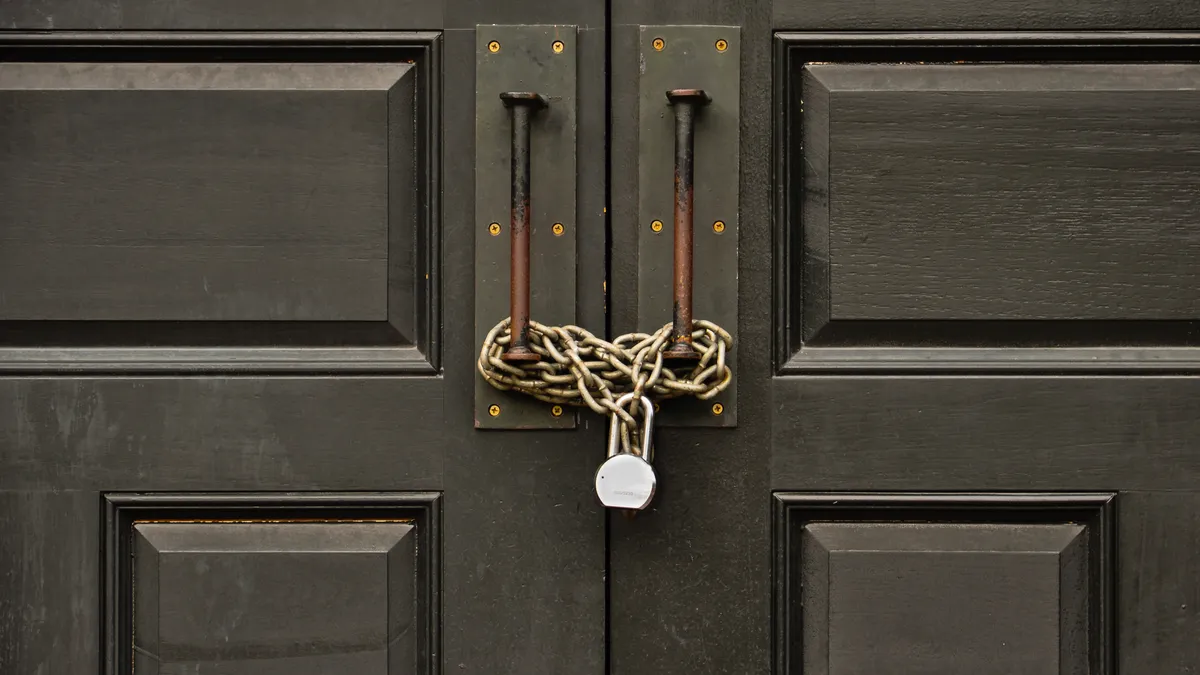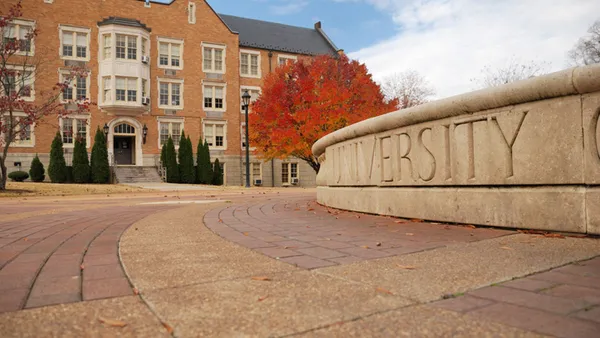Dive Brief:
- While colleges saw more financial stability during the pandemic, analysts at consultancy Bain & Company expect their financial positions to deteriorate as COVID-19 relief dries up and enrollment trends worsen, according to a report released Monday.
- Over the past decade, institutions’ expenses outpaced their tuition increases, putting some in precarious financial positions. Although higher education experts feared the pandemic would exacerbate these issues, many colleges instead saw their finances improve through federal relief funding, budget cuts and historic investment returns.
- However, the report’s authors expect these gains to be shortlasting. They predict the higher education sector’s level of financial stability will fall below pre-pandemic levels within the next three years.
Dive Insight:
Currently, 282 colleges are in precarious financial positions, down from 458 institutions in mid-2020, according to the authors. But they project that number will soon reach 495 colleges, exceeding the number before the pandemic hit.
Yet not all segments of the higher education sector are facing the same risk, the report said. Private colleges with strong reputations and large endowments tend to be in the best position, and Bain’s analysis shows more than two-thirds of these “elite” institutions enjoy strong financial resilience.
Large public universities, on the other hand, tend to have lower reserves and weaker margins, according to Bain.
Nonetheless, the authors don’t expect these colleges to fail, as they are supported by the public and have flexibility to cut costs and create new revenue streams.
Less than 40% of large public universities have strong financial resilience, a share expected to decline in the next three years, according to Bain. The authors determined resilience by measuring colleges’ net assets and expenses, net margins and three-year enrollment trajectories.
Other private and public colleges, however, may face a tougher road. They have fewer financial guardrails and will likely need to drastically cut costs to address a litany of upcoming challenges, including elevated inflation and surging operating costs, along with rising student expectations.
“In this perilous environment, colleges and universities will not be propped up by the confluence of factors that enabled them to pull through the pandemic years,” the authors wrote. “To prosper through future shocks or, for some, to merely survive, institutions must take action now to strengthen student demand and shore up their financial foundations.”
Bain’s analysis echoes findings reached by consultancy EY and Times Higher Education. In a report last week, they called on colleges and universities worldwide to take more drastic measures to secure their financial futures. Their suggested strategies included pursuing mergers and acquisitions and cutting academic programs that operate at a loss.
Bain reached similar conclusions in its report Monday. It suggested that institutions simplify their missions, including by removing complexity from degree offerings.
In that vein, the report praised recent moves by Johns Hopkins University. It noted that it has pursued a “focused strategy” by adding more health research faculty members, creating new research programs and making investments that led to more sponsored research across its medical, public health and nursing schools.















